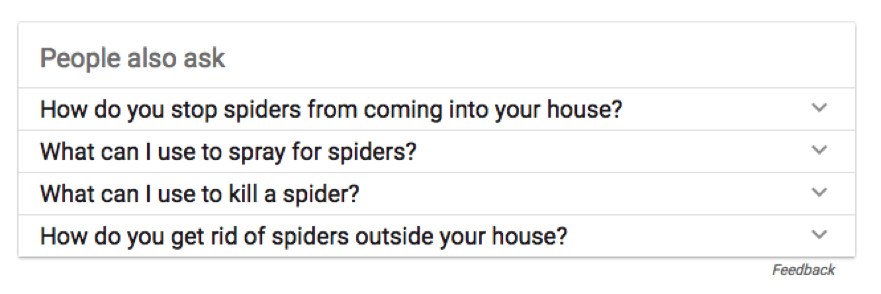
Content Optimization: 10 Tips to Improve Rankings
Apr 20, 2017|Read time: 6 min.
Want to know how to up your content optimization game? First of all, you need to write engaging content. But your job isn’t done after you hit publish.
Regardless of the content’s mission, you want it to get as much exposure and engagement as possible. Who are you helping? Who’s your audience? What’s the value-add? What part of the purchase funnel are you targeting, ToFu, MoFu or BoFu? These are questions you need to answer.
Easy Content Optimization Tips to Increase Visibility
Before you can optimize your content, make sure you read our post about the top Google ranking factors.
1. Choose a Dedicated Keyword or Set of Keywords
Keyword research should start before you publish your content ideas. Look at what your competitors are writing about. What questions are your target consumers asking in the discovery, research, and buying phases? Use tools like BuzzSumo to analyze the topic and what has performed well historically. Then create topic clusters around those keywords.
2. Analyze the Top 10-20 Sites Ranking for the Keyword(s)
Sometimes the best content optimization tips come from your competitors.
Make a spreadsheet and label headers to record information around word count, readability, content gaps, subtopics, intent, schema markup, and any other important qualitative factors. Your goal is to create a piece of content that’s better than all of them combined — a post that makes the searcher say, “Wow, that was awesome.”
3. Answer Relevant and Related Questions
Explore related questions searchers ask about the topic and try to answer the questions where your brand can provide unique information. If you’re a brand, you’re the expert, right?
Let’s use the example query of ‘how to get rid of spiders’ (eek). A quick search returns a list of results with a goldmine of related topics to cover (e.g. ‘getting rid of spiders with peppermint oil’ – that sounds interesting!) to fully develop your piece of content. Just look at the screenshots below from related searches and from Google’s new “People also ask” feature that suggests questions:

4. Use Headers Properly
Heading tags are critical to content optimization. Search engines are getting smarter every day, but they still need our help figuring out what’s most important for your content and readers. Use your keywords naturally in your title and H1 and H2 headers. Incorporate synonyms and tangential topics into subsequent headers as you explore the topic. You should only have one H1, but other headers are okay.
Headers also break up your content into digestible sections for the reader, so make them informative and useful. We scan and scroll to the sections that are most important to us, so make it easy for a visitor to accomplish that.
5. Embed Original and Sourced Video
Everyone digests information differently. Some prefer to read content in its entirety, while others may prefer to scan or watch a video. Support different users when necessary and include video to reinforce and/or explain certain concepts. That’s also an excellent way to stand out from competitors.
Instead of linking out to a YouTube video, embed the media directly. This increases engagement as well as dwell time.
Pro tip: add video markup, specifically transcript, which gives search engine spiders more information about your content without adding bulk to readers.
6. Optimize Your Images to improve load time
A more technical content optimization strategy is to improve page load time. Optimize your images for the web so they retain quality but load much faster. If users have to wait longer than 3 seconds for your content to load, they may end up back in the Google SERPs.
Don’t forget to use descriptive keyword-rich image titles. That will reinforce the topical relevance of your content and might help you show up in image searches.
Image Alt tags are also extremely important because they help search engines understand the context of the photo. Not only that, but Google will use alt text in place of anchor text if a link is imbedded in an image. Always fill them out and naturally be descriptive around your keywords identified in step one.
Check out our SEO checklist for more quick optimization tips!
7. Use Internal and Outbound Links
Don’t overthink this one. Support your content by interlinking to other pieces on your website that further explain a word, phrase, or topic. If it makes sense for the user, do it. Treat outbound links as citations or references to trustworthy sources of proprietary data, research and content reinforcing what you’re covering. This improves topical relevance and helps users dig deeper into various facts or concepts.
8. Interact and Encourage Engagement
If your content is truly spectacular (place yourself in a reader’s shoes), then it should naturally receive interaction and engagement. This isn’t to say a little help or encouragement doesn’t go a long way because it does. Comments on a post are a sign of content engagement and you should actively encourage that. A simple CTA line at the end of your content asking for comments or installing social share buttons is all it takes.
9. Create a Compelling Meta Title and Description
When it comes to content optimization, meta tiles reign supreme. It’s crucial to add keywords to your title meta tags to improve SEO as well as clicks.
Remember, meta tags (titles and descriptions) show up in a search engine’s results page. Users skim page titles to determine which result is most relevant and interesting, so don’t skimp on them!
Coschedule has a neat tool to help you craft better headlines. While meta titles and descriptions no longer have ranking impacts, they are one of the primary ways you can increase click-through-rates. Use them to communicate with a searcher and explain your content’s value-proposition.
10. Optimize Existing Content
If you failed at content optimization in the past, you can still go back and do a site content audit to make them better. Check Google Search Console for pages that have a significant number of impressions but few clicks. Then, identify the highest volume keywords ranking a page and add them to the meta tags and headings. Finally, sprinkle in some long-tail keywords for added SEO benefit.
This is by no means an exhaustive content optimization list, but it will definitely give you some quick wins.
Always place the user at the forefront of your mind and encourage an unbiased coworker or friend to read a draft. After they read your piece, ask questions like: What were your main takeaways? Do any sections need more depth? What’s missing? Take criticism objectively.
For visitor analysis, you could add real-time feedback with a ‘was this piece helpful’ prompt. Furthermore, content optimization doesn’t end when you publish a piece. Constantly analyze and improve everything you post.
Do you have any questions or other content optimizations you’d like to suggest? Leave them in the comments below.





